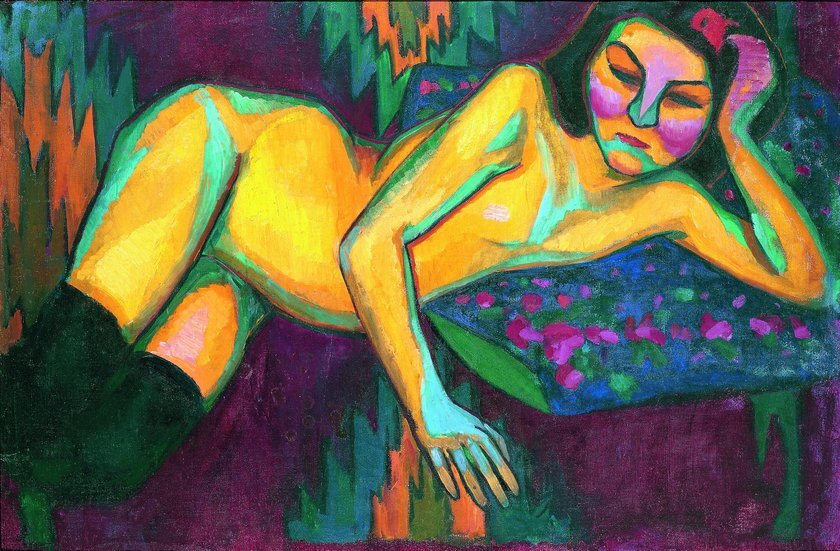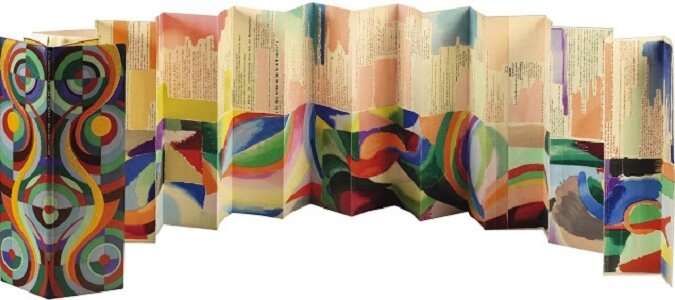The Groove Issue 51 - Why Uncertainty Helps Your Creative Process
WHY UNCERTAINTY HELPS YOUR CREATIVE PROCESS
Your creative process is usually filled with moments of uncertainty, no matter the area of your expertise.
Whether that is encountering a roadblock in a business project, a technical difficulty making things harder than you thought, or a complexity with a material that behaved differently than expected. And that is a good thing!
It’s an understatement to say that the last 18 months have been filled with uncertainty. But they also have been filled with opportunity. Being subject to unexpected situations and shifts in conditions can fuel the creative mind.
How Uncertainty Fueled Sonia Delaunay’s Career
Sonia Delaunay in 1976. Photo by Monique JACOT/Gamma-Rapho via Getty Images.
Sonia Delaunay, a Russian-French artist who was the first living woman to have a retrospective at the Louvre Museum in Paris, had a prolific and successful career that was constantly spiced up by unforeseen circumstances.
She started making traditional paintings in Paris at the beginning of her career in 1905 after moving from St. Petersburg. By 1911, with the birth of her son, which had naturally changed her life, she started experimenting with fabrics, geometry, and colors. This is when her Cubist-looking quilts, something that was as original as it was unique, began catching the eye of the Parisian art milieu.
Sonia Delaunay’s Yellow Nude, 1908
Two years later, she became friends with poet Blaise Cedars, who according to her “gave her a push and a shock”. Cedars invited Delaunay to illustrate his book and her ideas merged in a 2-meter-long accordion pleated paper that combined text and design and caused a stir among critics, collectors and other artists who started paying close attention to Delauney for her innovative ways with forms and different mediums.
Another unexpected thing happened in 1914: due to the WWI bombings in Paris, she moved to Spain and then to Portugal. She noted that the beauty of the latter inspired her to such an extent that she agreed to design the costumes for the productions of Sergei Diaghilev, the founder of the Ballet Russes, which she did to great fanfare.
Prose of the Trans-Siberian and of Little Jehanne of France is the collaborative artists' book by Blaise Cendrars and Sonia Delaunay. The work, published in 1913, is considered a milestone in the evolution of artist's books as well as modernist poetry and abstract art.
She did so well with costume design that in 1917, she designed a nightclub in Madrid called the Petit Casino. She also founded Casa Sonia, her own clothing and interior design store, which later opened a branch in Bilbao.
When Delaunay returned to Paris in 1921, it’s not a coincidence that she trademarked the word “simultané” as a nod to someone who could simultaneously influence one practice with what she had learned in another.
Sonia Delaunay, Costume of a Slave or Dancing Girl, Cleopatre, 1918, National Gallery of Australia
Delaunay went on to design private label collections, entire film and theatre sets and costumes, jewelry and tableware all while still keeping her art practice thriving.
She never underestimated the power that came with the uncertainty of moving countries and encountering new challenges. On the contrary, she used them to get better and to revamp her style and business at each new turn of events.
Unexpected Events Can Be Good Business Too
In business, things aren’t that different. When the pandemic hit in 2020, Kim Lawton, partner at an experiential marketing agency, Inspira Marketing, used this difficult challenge to provide value to all her clients and to her 500 employees.
She redirected their efforts into quarantine-ready tasks: creating content that could be viewed online; helping restaurants with menu development to move inventory; stocking the shelves of retailers after hours; and teaching bartenders speed-pouring techniques to minimize the time customers congregated at a bar.
These moves helped her tremendously because she saw an opportunity for reinvention.
After holding many different internal meetings with her employees and with her clients, and asking them hundreds of different questions, she realized that they were not going to be just an experiential marketer anymore, but a full-service omnichannel agency.
With this knowledge, after harnessing the power of the unexpected, she expanded the way her agency interacted with clients, creating deeper relationships with them and with their employees.
The Surprising Benefits of Emotional Ambivalence
Unexpected events can trigger mixed emotions and these two can help form new associations, spot new business opportunities or shine a light on that missing piece that you were looking for.
A research paper from the University of California, Davies and Radboud University in the Netherlands, proposes that any unexpected life experience - from the traumatic to the joyful - can lead to creativity as long as it pushes you outside of your normal patterns.
In another study, researchers have found that emotional ambivalence, or simultaneously experiencing positive and negative emotions - for example excitement and frustration - are better for creativity than one or the other on its own.
It doesn’t have to be something as major as a pandemic, or traumatic as a big loss, but things as basic as writing a page with your nondominant hand, intently choosing a different path to go to work twice a week, or following a different routine in your day, can actually increase the amount and quality of the ideas that you come up with. Or open the path for that breakthrough you’ve been waiting to happen. Or lead you to your big “aha” moment.
All you have to do is try.
Last week I was a guest on the Optimal Life Podcast with Nate Haber. We talked about the future of the art world, the dopamine effects that buying art produces in collectors’ brains and much more. You can listen here.
Thank you for reading this far. Looking forward to hearing from you anytime.
There are no affiliate links here. Everything that I recommend is done freely.




